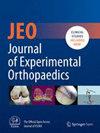The incidence of both primary and revision total knee arthroplasty (TKA) is expected to rise, making early recognition of TKA failure crucial to prevent extensive revision surgeries. This study aims to develop a deep learning (DL) model to predict TKA failure using radiographic images.
Two patient cohorts who underwent primary TKA were retrospectively collected: one was used for the model development and the other for the external validation. Each cohort encompassed failed and non-failed subjects, according to the need for TKA revision surgery. Moreover, for each patient, one anteroposterior and one lateral radiographic view obtained during routine TKA follow-up, were considered. A transfer learning fine-tuning approach was employed. After pre-processing, the images were analyzed using a convolutional neuronal network (CNN) that was originally developed for predicting hip prosthesis failure and was based on the Densenet169 pre-trained on Imagenet. The model was tested on 20% of the images of the first cohort and externally validated on the images of the second cohort. Metrics, such as accuracy, sensitivity, specificity and area under the receiving operating characteristic curve (AUC), were calculated for the final assessment.
The trained model correctly classified 108 out of 127 images in the test set, providing a classification accuracy of 0.85, sensitivity of 0.80, specificity of 0.89 and AUC of 0.86. Moreover, the model correctly classified 1547 out of 1937 in the external validation set, providing a balanced accuracy of 0.79, sensitivity of 0.80, specificity of 0.78 and AUC of 0.86.
The present DL model predicts TKA failure with moderate accuracy, regardless of the cause of revision surgery. Additionally, the effectiveness of the transfer learning fine-tuning approach, leveraging a previously developed DL model for hip prosthesis failure, has been successfully demonstrated.
Level III, diagnostic study.



